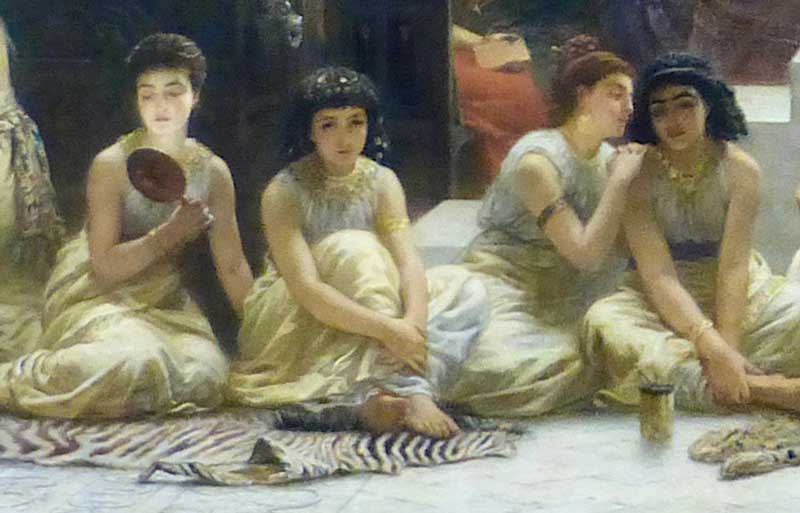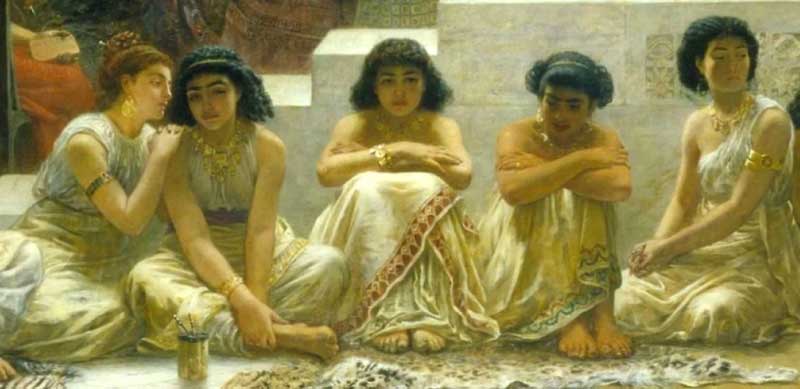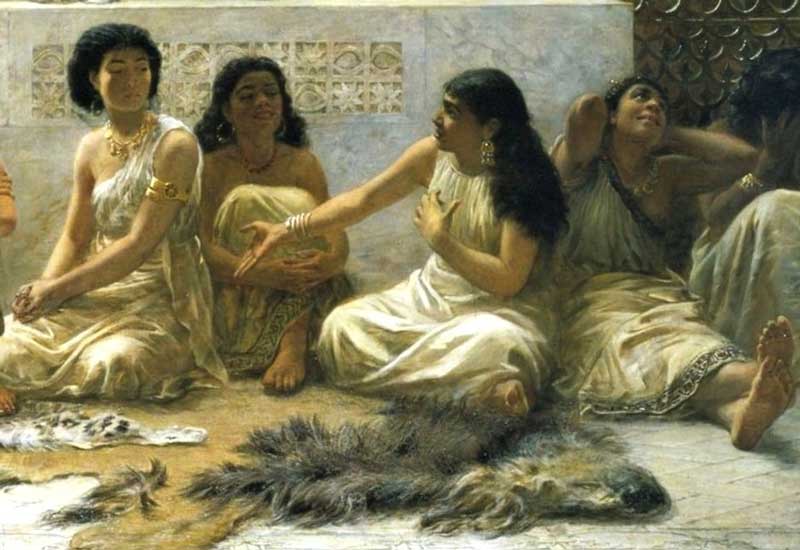
Inspired by the accounts of Herodotus, the ancient Greek historian, The Babylonian Wives Market (1875), a monumental canvas, measuring 172 x 304 cm, created by the British painter Edwin Long, depicts a scene of the Babylonian Marriage Market, in which young unmarried women were gathered up, and the wealthy Babylonian grooms vied with each other to raise the price and buy the beautiful girls in the auction. According to the description of Herodotus in the 5th century BC, the Babylonian Wives Market was a customary annual event, in which all the unmarried women whose families could not afford to offer a dowry, were auctioned in a public square for marriage, and part of the funds raised went towards marrying those considered less privileged, ensuring that all the young women find their husbands. The painting, which took two years to complete, and displayed at the Royal Holloway, University of London, was sold for an astounding amount of 6,605 pounds, which, at that time, was the highest price paid for a piece of work of a living artist.

Apart from the accounts of Herodotus, Edwin Long also had the opportunity to gather details from the ancient artefacts discovered from the archaeological sites of Mesopotamia. As he had the access to the Assyrian collections of The British Museum, he aesthetically incorporated several details from those artefacts in his painting, which enabled him to put something extra in his creation that was closer to the real life of the Babylonians, as compared to his predecessors. However, The Babylonian Marriage Market, meticulously depicting the women being auctioned off like goods, resonated deeply with the European public, particularly with the most progressive circles, who vehemently opposed such practices.

It is to be noted that, during that time, Britain was engulfed in the struggle for women's rights, when women were gaining financial independence from their husbands, heated debates raged about women's education, and there were fervent discussions and deliberations about granting women the right to vote. However, despite the criticism, The Babylonian Wives Market caused a stir and was deemed bold and socially significant, because the idea of beautiful girls marrying off less attractive young women was not unheard of in Britain. In fact, in some families, the more attractive daughters did have their dowries reduced in favour of their less beautiful sisters.

However, painted from museum specimens, The Babylonian Marriage Market does not convincingly take the viewers to the ancient world, partly due to the unmistakable setting of a Victorian-era auction house. In the canvas, the crowd of male buyers that appear to come from different wealth levels and classes is relegated to the background, engaged in bidding on the women, standing on the white stone pedestal with her back turned to the viewers. She is displayed to the possible buyers like a commodity for sale, by a woman with darker-skin, while the auctioneer stands to their left, presenting the woman to be sold. The foreground of the painting depicts a line of young Babylonian women who are seated facing the viewers in different poses, waiting for their turn to be auctioned, and seem to be more engrossed in chatting with each other than in the events of the auction. While the girl on the extreme left is already peeping under the veil of the next in line, the girl sitting next to her, admires her beauty in a hand-mirror. However, the young woman in the middle with folded arms look more disconsolate, and the one at the extreme right seems to be hiding her face on her knees in despair. On the contrary, the girl just ahead of her is engaging in some animated conversation with one of the men.

The Babylonian Marriage Market is displayed in a gold painted frame, embossed with numeric Roman numeral script, encased in a circle which is positioned directly below each bridal figure in the painting, probably to designate the rank of each of the brides.
